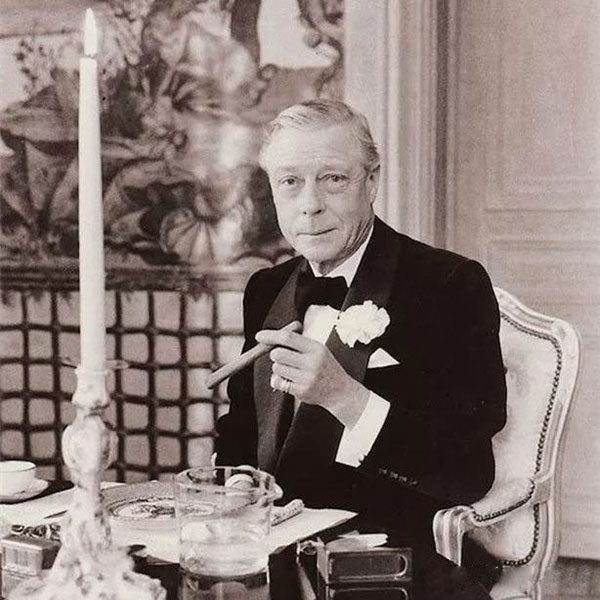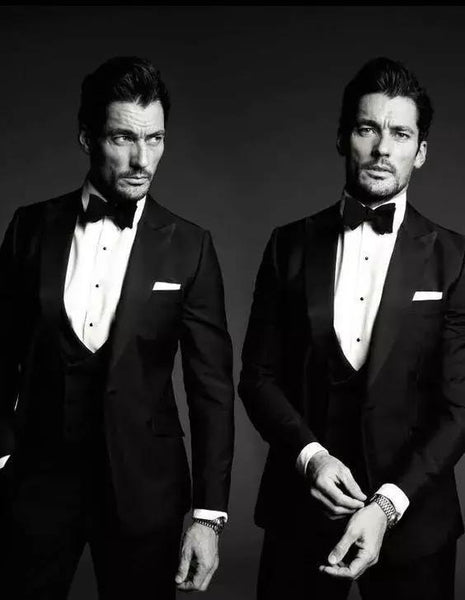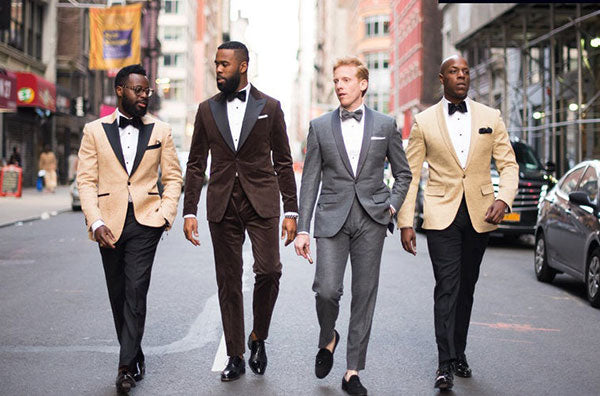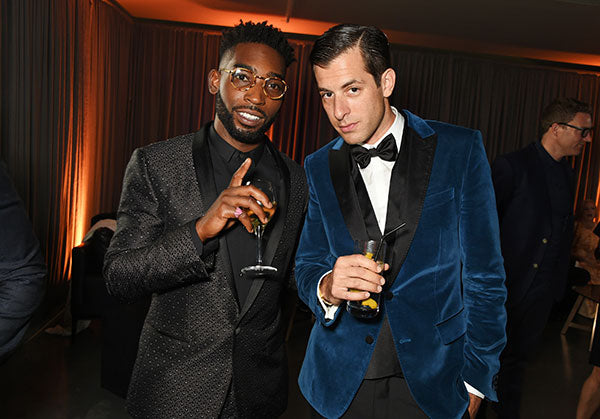
One of the guidelines for high class social situations is 'judging people by their appearance'! This can be seen in the movie "James Bond" in which the secret agent Bond is popular all over the world. James Bond not only has a perfect body, delicate face, but also a perfect British gentleman style, which mostly comes from the social etiquette and the corresponding dress code for different occasions. So, don't think Tuxedo is far from you, there are always some special occasions, only such a dress code culture can hold the scene.

The word Tuxedo is originally from the Indian language (Tuksit), which means an animal with rounded feet, and is said to mean wolf, while Tuksit is originally a lush forest area (place name) in the mouth of the Indians, which should be the area where wolves are often found (wolf gathering place).

In 1812, Mr. Pollux Lorillard, the first generation of the Lorillard family, a prominent investor in New York at the time, bought the site and invested in a number of hunting lodges, opening up a noble hunting ground with an adventurous style, and later invested heavily in improving the land and opening up a park. It was completed in June 1886 and named "Tuxedo Park". The word Tuxedo was born.

Later, Mr. Griswold Lorillard of the Lorillard family established a community club on the basis of Tuxedo Park, which was dedicated to entertain the aristocracy and named "Tuxedo club", and since then, Tuxedo has become a place for the upper class of the United States The Tuxedo Club was named the "Tuxedo Club" and from then on, the Tuxedo Club became a place where the upper class of the United States met and socialized. While socializing, it also became a stage to showcase and refine the dress code of gentlemen .....

The 1860s saw the emergence of the more casual everyday suit as the British middle and upper classes became more active outdoors. At the same time they began to look for an alternative to the formal evening tuxedo. The Henry Poole Group made a tail-less tuxedo for Edward VII, then Prince of Wales, to wear as a casual suit.

One of the most common descriptions of Tuxedo, which arrived in the United States in the late 1860s shortly after its appearance in England, is that it was common among the high society of Tuxedo Park, New York. It is recorded that the fourth generation of Lorillard, a well-known tobacco merchant, enjoyed hunting or sporting in "Tuxedo" Park, so in October 1886, the first fall party of the Tuxedo club was established, and his son wore a tuxedo-shaped dress without a tuxedo on the stage, which is Tuxedo appearance.
A newspaper account of the time shows that the original dresses were worn by novelties and therefore were not accepted by the American public.
Originated in the Kingdom of Great Britain from the predecessor of Tuxedo - Cows set (Cows)
In 1885, the summer was exceptionally hot, and Queen Victoria, as in previous years, went to the Isle of Wight to escape the heat, near a port called Cows in the north of the Isle of Wight, where there is a famous sanctuary of rest and recuperation, where every year famous gentlemen and noblemen from all walks of life come to recuperate and socialize.

During the dinner, the Queen was surprised to find a man's unique attire, which immediately aroused the curiosity of Queen Victoria, which was a dinner dress without a tuxedo, with a satin lapel, decorated cuffs, a white bow tie and a black dress undershirt, and a top with side pockets and flaps (below), which seemed like a smoking suit but more formal, but it was more convenient and comfortable than the evening dresses of the time - the tuxedo.

This complementary design was highly praised by Queen Victoria, and the tuxedo was more convenient and comfortable than the evening dress of the time.
Its characteristics also made it immediately sought after by many famous gentry and aristocrats, in London used to wear tuxedo social circles also therefore put forward in the retreat or entertainment venues can wear this casual dress without tail advocate (before all can only wear tuxedo), and its birthplace Cows its name also logically became synonymous with it, when called Caucus suit (Cows), because this clothing is usually For home dinner, some people also called home dress suit, after 1888 called Dinner, Lounge.

So it was not until 1888 when the upper class also adopted it as a summer dress and casual wear that the Tuxedo became officially popular.
In 1889, the Tuxedo with a bump collar was established in England (below, Right), and its model continued the characteristics of the Cauze suit, with details streamlined, such as the lapel with two buttons becoming one button, and the outside pockets with flaps becoming single or double open lines, in line with the rule that the simpler the more formal the dress code for gentlemen.

Due to the British obsession with traditional history and culture, they did not like the casual feel of the robe characteristics, and returned to the tuxedo collar type system, the British native called Dinner or Lounge (this is because as the country of origin of the British, and do not want to accept a foreign word "Tuxedo" to call (This is because as the country of origin, Britain did not want to accept a foreign word "Tuxedo" to call this kind of dress without tuxedo, so it has been using the original name until today). The British version of the tuxedo was established here and is still in use today.

Tuxedo was commercialized in the 1930s and began to become synonymous with the word tail-less dress. before the 1900s the word referred to the upper dress alone, and then began to refer to the full dress with top and bottom and jewelry. In today's society, as Tuxedo is used in many occasions (such as wedding ceremonies, theater, dinner parties, etc.), similar to Dinner or Lounge such a single-meaning word does not well summarize the scope of the use of Tuxedo, by the 21st century, the British people also began to gradually accept the word. So this is also the main reason why Tuxedo was widely accepted as a representative word later.

Those who prefer to call it Dinner or Lounge can be regarded as the embodiment of "Chong Ying" or "back to the roots".
So, who would have thought that what was initially invented for informal occasions would now represent formal occasion menswear.
In most European countries such as France, Italy, Germany and Russia, the word "smoking" is generally used to refer to a sans culottes dress, and in Spain "esmoquin" is used. The term originated from the Victorian smoking jacket, which was a casual evening dress for men. Because the jacket, pants and bow tie are often black, the tuxedo is also nicknamed "penguin suit" (penguin suit), and some other slang terms include "monkey suit" (monkey suit) and "soup and fish" from 1918. The "soup and fish" (soup and fish).

A tailless tuxedo can easily be worn in an old-fashioned way, and that's because you haven't been paying attention to its trends. The people selling the tuxedo won't tell you that you're looking at a style that was discontinued more than 10 years ago.

Next, we'll talk about how men can avoid the mistakes they make when choosing a Tuxedo
*Some pictures from the network, if involved in infringement, please contact us to delete
Ref:
https://www.imdb.com/title/tt1606375/
http://www.007museum.com/No_Time_To_Die_Omega.htm
https://www.realtor.com/
https://www.insider.com/queen-elizabeth-shaded-trump-tiara-symbol-protection-against-illness-evil-2019-6